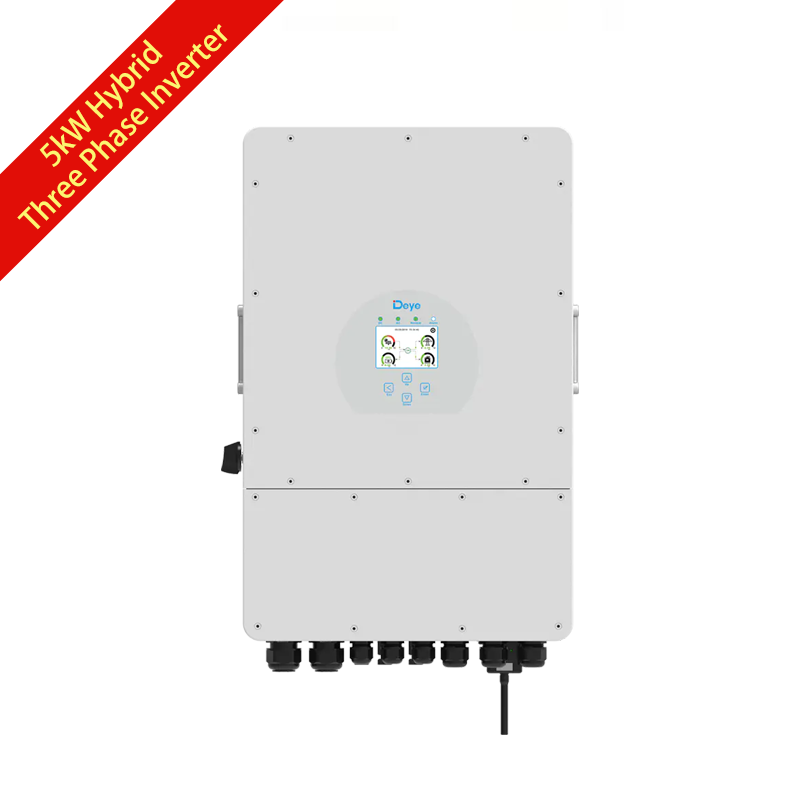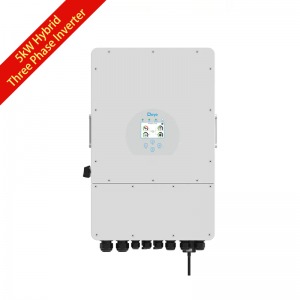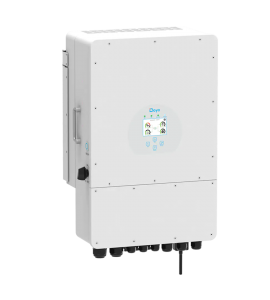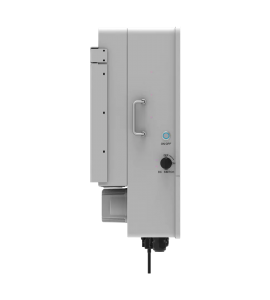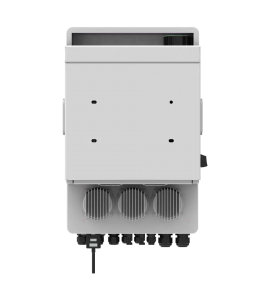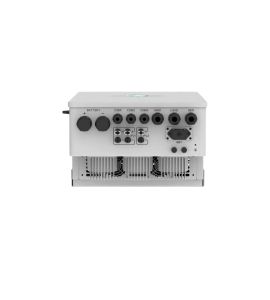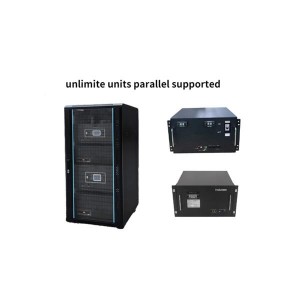

Deye 5kW Three Phase Hybrid Solar Inverter
ABOUT
Deye 5kW Three Phase Hybrid Solar Inverter
| Model | SUN-5K-SG04LP3-EU |
| Battery Input Data | |
| Battery Type | Lead-acid or Lithium-ion |
| Battery Voltage Range (V) | 40~60V |
| Max. Charging Current (A) | 120A |
| Max. Discharging Current (A) | 120A |
| Charging Curve | 3 Stages / Equalization |
| External Temperature Sensor | Yes |
| Charging Strategy for Li-Ion Battery | Self-adaption to BMS |
| PV String Input Data | |
| Max. DC Input Power (W) | 6500W |
| Rated PV Input Voltage (V) | 550V(160V~800V) |
| Start-up Voltage (V) | 160V |
| MPPT Range (V) | 200V-650V |
| Full Load DC Voltage Range (V) | 350V-650V |
| PV Input Current (A) | 13A+13A |
| Max. PV ISC (A) | 17A+17A |
| Number of MPPT / Strings per MPPT | 2/1 |
| AC Output Data | |
| Rated AC Output and UPS Power (W) | 5000W |
| Max. AC Output Power (W) | 5500W |
| Peak Power (off grid) | 2 times of rated power, 10 S |
| AC Output Rated Current (A) | 7.6/7.2 |
| Max. AC Current (A) | 11.4/10.9 |
| Max. Continuous AC Passthrough (A) | 45A |
| Output Frequency and Voltage | 50/60Hz;3L/N/PE 220/380Vac,230/400Vac |
| Grid Type | Three Phase |
| Current Harmonic Distortion | THD<3% (Linear load<1.5%) |
| Efficiency | |
| Max. Efficiency | 97.60% |
| Euro Efficiency | 97.00% |
| MPPT Efficiency | 99.90% |
| Protection | |
| PV Input Lightning Protection | Integrated |
| Anti-islanding Protection | Integrated |
| PV String Input Reverse Polarity Protection | Integrated |
| Insulation Resistor Detection | Integrated |
| Residual Current Monitoring Unit | Integrated |
| Output Over Current Protection | Integrated |
| Output Shorted Protection | Integrated |
| Output Over Voltage Protection | Integrated |
| Surge protection | DC Type II / AC Type Ⅲ |
| Certifications and Standards | |
| Grid Regulation | CEI 0-21, VDE-AR-N 4105, NRS 097, IEC 62116, IEC 61727, G99, G98, VDE 0126-1-1, RD 1699, C10-11 |
| Safety EMC / Standard | IEC/EN 61000-6-1/2/3/4, IEC/EN 62109-1, IEC/EN 62109-2 |
| General Data | |
| Operating Temperature Range (℃) | -45~60℃, >45℃ Derating |
| Cooling | Smart cooling |
| Noise (dB) | <45 dB |
| Communication with BMS | RS485; CAN |
| Weight (kg) | 33.6 |
| Size (mm) | 422W×699.3H×279D |
| Protection Degree | IP65 |
| Installation Style | Wall-mounted |
| Warranty | 5 years |
Functions and advantages of hybrid solar inverters:
1. Break through the limitations of weather changes
Since the inverter can convert AC power into DC power and store it in the battery, and convert the DC power in the battery into AC power for users after power failure, this greatly reduces the impact of weather conditions on power generation stability. It can greatly improve the stability and quality of the power grid.
2. Higher power consumption efficiency
Compared with other model, this hybrid solar inverter have higher power consumption efficiency, which can not only break through the limitations of weather conditions and time, solve the problems existing in grid-connected photovoltaic inverters, but also provide users with more stable , long-lasting power, avoiding the inconvenience and trouble caused by the failure of the power system, which is also an important reason why more users choose the inverter.
3. High stability
In the case of a grid system failure, the hybrid solar inverter can directly convert the stored DC power into an AC power supply grid system, which is less affected by external factors, can greatly reduce electricity costs, and has high stability. When in the peak period of power consumption, the solar inverter will convert the solar direct current into alternating current and merge it into the grid for the use of the majority of users; while in the low period of power consumption, the solar inverter will convert the alternating current in the grid The storage of direct current can realize the two-way conversion of direct current and alternating current, and can provide a strong guarantee for power consumption when the power is cut off. In addition to the above functions, the inverter can also provide more stable and pure current with less harmonic content for the power grid, which not only meets the trend and requirements of energy saving and emission reduction in today's society, but also improves the stability and quality of the power grid.
